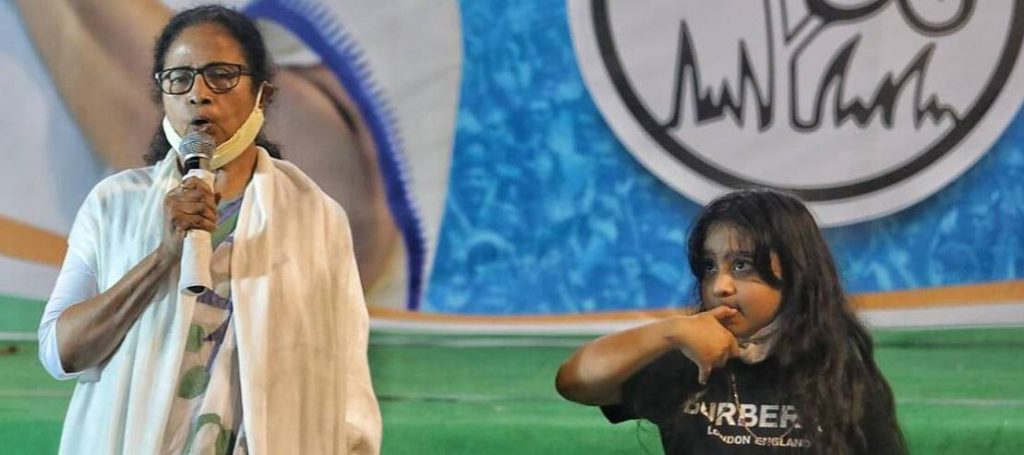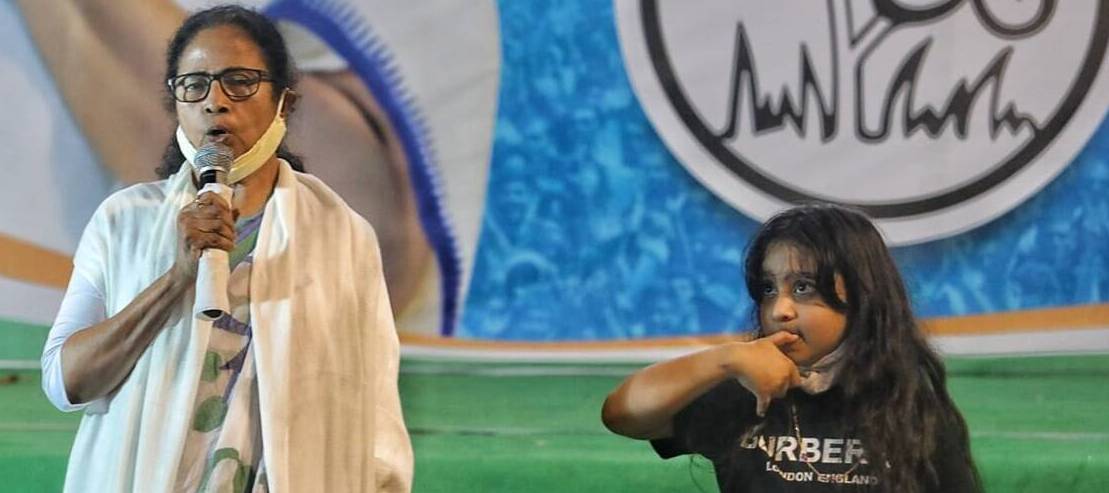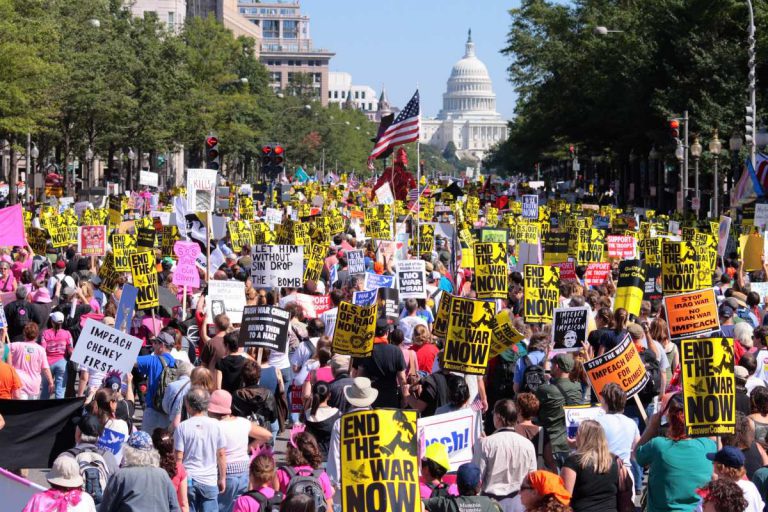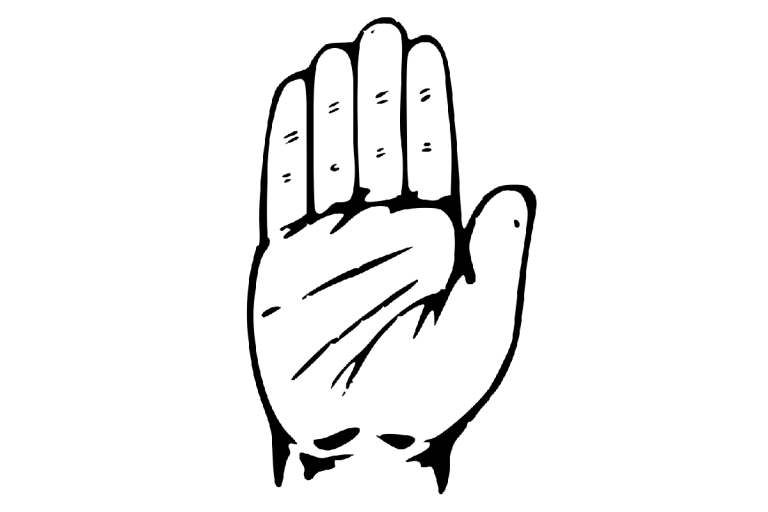Didi hits double ton – Decoding the West Bengal verdict

Dwaipayan Sinha is currently pursuing Masters in International Relations from Jadavpur University, Kolkata. His interests are Foreign Policy, Global Affairs and South Asian politics.
Devansh Mishra is currently pursuing his B.A. LLB degree from Llyod Law College, Greater Noida. He is interested in political and legal affairs.

Following the predictions of most exit polls, West Bengal rejected saffron and remained green. Initially, it seemed to be a close contest with the ruling Trinamool Congress (TMC) ahead of the principal challenger Bharatiya Janata Party (BJP) by a slender lead in the morning of the counting day. But as the day progressed the TMC kept increasing the lead, eventually retaining power the second time in a row with a two-thirds majority. TMC won 213 seats, bettering its 2016 performance of winning 211 seats, while the BJP managed to win 77 seats. Even though the incumbent Chief Minister Mamata Banerjee lost from Nandigram, the seat from which she was contesting in this election and which has played an important role in her political career, she took oath as the Chief Minister of West Bengal for the third time on 5th May 2021. Suvendu Adhikari, Banerjee’s former aide who had defected to the BJP months before the election and defeated her by 1956 votes, was unanimously elected as the Leader of Opposition on 10th May 2021.
The major takeaways from the results
The ‘PK’ Factor
Back in December 2020, Prashant Kishor declared that the BJP would not be able to cross 100 seats in Bengal. It was not just a regular statement as he put his job was on the line. The ‘PK’ factor ended up being one of the most crucial factors behind the TMC victory. Kishor was the brain behind the ‘Bangali vs Bahari’ strategy which helped the ruling regime to label the various Central BJP leaders campaigning in Bengal as “outsiders” who only cared about usurping power in Bengal but did not care for the Bengali culture. In contrast, the TMC put forward the slogan of “Bangla Nijer Meyekei Chae” (Bengal wants its own daughter only) which projected Mamata Banerjee as the daughter of Bengal. The ‘Khela Hobe’ theme, which became an internet sensation almost instantly, was successful in creating an image of a simple lady who was waging a lonely battle against the mighty BJP electoral machinery.
Various welfare schemes by the incumbent government like Kanyashree, Rupashree and Sabuj Sathi are immensely popular among the people in Bengal. However, there was visible anger on the ground against the TMC workers for taking ‘cut money’ from the recipients of these schemes to fill their own pockets. Several opposition parties had tried to highlight this issue which even forced Banerjee to publicly ask her workers to return the money on one occasion. Interestingly, even though the people were angry at the local TMC leaders and workers, their adulation for Banerjee remained undiminished.
Kishor and his Indian Political Action Committee (I-PAC) decided to neutralise this anger by holding a ‘Didi ke Bolo’ campaign whereby the affected parties could air their grievances to Banerjee directly. He was also instrumental in coming up with the ‘Duare Sarkar’(government at your doorstep) initiative and Swastha Sathi scheme which benefitted lakhs of families. The government provided various relief measures like granting free rice during the COVID-19 induced lockdown. These course correction measures helped TMC regain the ground that they had lost to the BJP in the Lok Sabha elections of 2019 where the latter had won 18 seats to TMC’s 22.
Kishor also played a significant role in projecting Banerjee as the face for all the 294 seats up for contest essentially making the battle a ‘Mamata vs who’ clash. As the BJP did not have a single local leader who could remotely match Banerjee’s mass appeal, they were forced to project Prime Minister Narendra Modi as the main face of the party. While Modi was able to swing a significant amount of votes in his party’s favour during the 2019 Lok Sabha polls, he was unable to do so for the Assembly polls of 2021. The inability to project a local face and the over-reliance on Central leaders like Modi, Amit Shah, J.P. Nadda etc for addressing local rallies helped TMC further their outsider narrative which eventually rang the death knell for BJP.
Abhishek Banerjee and Prashant Kishor were on the receiving end of barbs from various opposition parties during the campaigning phase. In the end, these two youngsters emerged with flying colours and established themselves as forces for the future.
3M’s of TMC
Mamata
Although there were plenty of charges of corruption and maladministration against the Mamata Banerjee government, the personal image of Banerjee has not been tarnished. She remains the most popular political figure in West Bengal as witnessed by the huge turnouts in her rallies. The powerful impact of an injured Banerjee campaigning throughout the state seated on a wheelchair with her left foot plastered up resonated with the people who decided to punish the party hurting their ‘Didi’ in the polling booths.
Muslim
Muslims constitute almost one-third of the state’s population. TMC, which was already extremely popular among the Muslims, was helped by the consolidation of Muslim votes in its favour. The Hindutva brigade’s relentless campaign on anti-Muslim rhetoric made sure that the Muslims saw TMC as the only alternative. Banerjee’s stance against the National Register of Citizens (NRC) and Citizenship Amendment Act (CAA) made the party dearer to the already marginalised community. After the Sitalkuchi incident, Banerjee had campaigned vigorously in Muslim-dominated areas highlighting the attitude of the Central government and Central forces towards the Muslims.
Mahila:
49% of West Bengal’s electorate is comprised of women. The various schemes of the TMC government have benefited the women of the households who have voted in huge numbers for TMC. While women voters are considered to be an integral part of BJP’s core vote bank in some north Indian states, the votes of this community in favour of TMC in Bengal helped the TMC to counter the polarisation tactics of the BJP. Banerjee led several rallies protesting against the rise in fuel and gas prices which were directly impacting the household budgets of the families. A number of women candidates were given tickets by the TMC to highlight the importance of women in the party’s rank and file.
Perception versus Reality
Perception is one of the most important factors in politics. But the ground reality still remains THE most important factor. The BJP’s prospects were overhyped by the party’s leaders and the national media. Amit Shah, the former BJP President and current Home Minister of India, even went to the extent of proclaiming that the BJP will win over 200 seats. But on the ground, the BJP’s organisation was not as strong as that of their principal rival TMC. The BJP had fielded many TMC turncoats, most of whom could not win the seats allocated to them. Former big TMC leaders like Rajib Banerjee and Rathin Chakrabarty failed to make an impact while contesting on BJP tickets. BJP also fielded a few Tollywood stars hoping to cash in on their popularity in the tinsel town which did not work out. A few sitting BJP Members of Parliament (MPs) like Babul Supriyo and Locket Chatterjee also lost by big margins. This came as a great shock to the BJP high command. TMC, on the other hand, was very strong on the ground and the perception of people outside of Bengal mattered very little for the party.
Limits of Polarisation especially in Bengal
According to Pradeep Gupta of Axis My India, maximum polarisation in an election can lead to 55-60% consolidation of votes in favour of a party. The West Bengal election was one of the most intensely fought elections on communally charged issues. While inciting communal feelings and hatred has worked for the BJP in many states, the strategy of dividing voters into communal lines seems to have backfired in Bengal. Contrary to the expectations of the BJP, counter-consolidation of the Muslim votes happened in favour of the TMC while the Hindu votes were almost evenly split between the TMC and BJP. According to CSDS post poll election analysis, a large section of Hindus moved away from the BJP in 2021. It also notes that while most Hindus agreed that the Mamata Banerjee government had unduly favoured Muslims, they decided to vote for the TMC because they considered the party to be less evil in comparison to the communal BJP. Another interesting fact is that the Hindu community tended to vote for BJP in seats where the Muslim population was quite high. But the fight for the Hindu votes was neck to neck in most other seats. The Bengali Hindus seem to have prioritised their ‘Bengali’ identity over their ‘Hindu’ identity.
BJP’s Khela Shesh
The BJP was leading on 121 assembly segments according to 2019 Lok Sabha results. This means they lost around 50 seats where they were in lead as per the 2019 Lok Sabha elections. The BJP got 38.1% of the total votes in 2021, down from its 40% vote share in the 2019 Lok Sabha elections. The TMC, on the other hand, got 47.9% of the total votes in 2021, up from its 43.3% vote share in the 2019 Lok Sabha elections. While the BJP could retain its supremacy in north Bengal, it lost a number of seats in rural Bengal-where it was perceived to be strong. BJP had targeted the backward classes and the rural poor and was successful in appropriating these sections under the larger Hindutva umbrella in 2019. However, Mamata Banerjee successfully reached out to these sections after the Lok Sabha elections of 2019 and was rewarded as a portion of the backward communities ditched the BJP in favour of the TMC. BJP’s vote share among the backward classes still remains a lot. BJP‘s decision to field candidates who cut their teeth in other parties, instead of fielding their original members, made the BJP cadre angry, eventually benefitting TMC. COVID-19 mismanagement and a lackadaisical approach of the BJP leadership to daily issues of the electorate hurt the BJP. Insensitive comments made by the BJP top brass including Modi and BJP State President Dilip Ghosh moved the urban and secular sections away from the BJP. The voting percentage in this election was slightly down compared to Bengal’s standards, which show a lack of interest in ‘Poriborton’. BJP will take heart to the fact that they could improve on their 2016 performance of winning only 3 seats.
The Complete Decimation of the Third Front
The third front, named Samyukt Morcha, was comprised of the Left parties led by the Communist Party of India (Marxist)(CPI-M), The Indian National Congres(INC) and the Indian Secular Front(ISF). The third front was completely routed in the election with only the ISF winning one seat. The Congress could not even manage to win a single seat in its erstwhile strongholds of Malda and Murshidabad, with the TMC bagging majority of the seats in these districts. The alliance with ISF hurt both the Congress and the Left as they lost their Muslim votes to TMC and their Hindu votes to BJP. The Congress high command must seriously question the leadership skills of Rahul Gandhi. The Left parties have to introspect and come up with new tactics to capture the imagination of the youth.
What lies in the future
Political violence, which has been a part of Bengal’s politics for a long time, must come to an end. The brutal scenes witnessed during the Panchayat polls of 2018 must not be repeated. The news of post-poll violence perpetrated by anti-social elements has captured the attention of the national media. The government must reign in such elements to usher in peace and prosperity for the citizens.
The weakness of BJP while fighting a strong local leader was exposed again.
Mamata Banerjee consolidated her position as a strong regional leader in this election. It is possible that she will be the face of an anti-Congress and anti-BJP third front for the 2024 Lok Sabha elections.
The road to Delhi goes through Uttar Pradesh (UP). The UP Assembly election of 2022 is considered the real semi-final before the Lok Sabha elections of 2024. The TMC’s win will give the various opposition parties across the country some relief. It is important for the BJP to retain power in UP if they aspire to get re-elected in 2024.
Image Credit: The Indian Express








